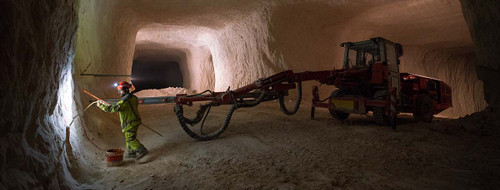What is the Significance of ATEX Markings for Headlamps?
The best headlamps for use in hazardous work environments come with what is known as ATEX Markings. The ATEX acronym refers to EU equipment standards intended for use in explosive atmospheres. These markings are based on several factors, including the work environment and its perceived threat level. Different kinds of headlamps are designed for different applications, such as working above vs. underground and working around hazardous dust vs. gas and vapors.
A related benefit our customers have found is that even if you are not in a hazardous work situation, the headlamps that earn an ATEX certification have been solidly built. Compared to a wide range of consumer focused products, ATEX rated headlamps were designed from the get-go to handle harsh industrial work sites. There is value in that.
Learn more about ATEX Markings and how they can protect you and your team in the field.
ATEX Markings Explained
ATEX environments are those that are known to be hazardous, whether it’s a confined space or one that contains combustible particles. The industry divides ATEX Markings into different “zones.”
Zone 20 are environments with combustible dust and permanent work environments where you occupy the same space for around 1,000 hours a year. While Zone 0 are those with combustible gas.
Zone 21 are environments with combustible dust and occasional work environments where you occupy the space anywhere between 10 and 1,000 working hours per year. While Zone 1 are those with combustible gas.
Zone 22 are environments with combustible gas and accidental work environments where you occupy the space for 10 hours or less per year. While Zone 2 are those with combustible gas.
Certain ATEX Ratings have been approved for different “zones.” Once you find a reliable headlamp, make sure it’s been approved for your specific zone.
Markings will also feature an “I” for mining industries or those working underground or a “II” for those working above ground. The letters G and D are used to identify the type of combustible particles in the space. “G” refers to combustible gases and vapors, while “D” refers to combustible dust.
ATEX Markings also include a temperature rating for working in extreme temperatures. The higher the rating, the more durable the headlamp.
Examples of ATEX-Certified Headlamps
Be sure to check the ATEX Marking when shopping for a headlamp. We sell a range of products on our website to help you find the right safety gear based on your work environment.
Let’s look at the Petzl PIXA 2 Mixed-Beam Headlamp E78BHB 2UL as an example. It comes with an ATEX Marking of “Ex II 3 GD, Ex nAnL IIB T4.” This means that the headlamp is rated for above ground environments with combustible gas and dust. The T4 means it is rated for environments up to 135 degrees C. It’s also extremely light, so it won’t weigh you down in the field. The built-in adjustable headband makes for the perfect fit every time. Having two lamps will also help you see more of your surroundings.
The Petzl PIXA 1 Wide Beam Headlamp E78AHB 2UL is similar, except it only comes with one headlamp instead of two. It has an ATEX Marking of “Ex II 3 GD, Ex nAnL IIB T4.” If you only need one light to get the job done, this is a great choice.
The Petzl PIXA Z1 Headlamp E78DHB 2 is another great option. It is rated for 1/21 (II 2 GD Ex ib IIB T4 Gb IIIB T135° C Db) explosive environments. The included AA batteries are rechargeable as long as you don’t use the headlamps in ATEX environments.
Keep this information in mind when shopping for safety headlamps and related accessories. Contact the safety supply professionals at PK Safety for information on this and all other safety equipment.
Recent Posts
-
Why Hi-Vis Winter Work Gear is Essential for Safety During the Cold Months | PK Safety
When temperatures drop and daylight hours shrink, outdoor workers face additional hazards that incre …Oct 31st 2024 -
Self Braking Descender: Advanced Rope Control for Fall Protection | PK Safety
For professionals working at heights, controlled descent is critical. Whether you’re a window cle …Oct 30th 2024 -
Hand and Eye PPE Machinists Rely On | PK Safety
Machining environments are inherently dangerous, with workers often surrounded by heavy machinery …Oct 27th 2024





